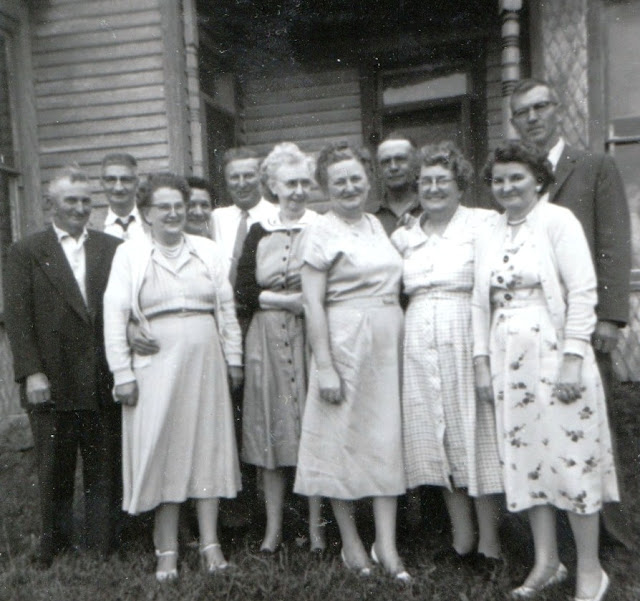My Grandmother Grace was born to Elmer R. Coplen (1867-1950) and Frances A. Rodabaugh, who met at a church convention and married in 1891. They had a family of seven and raised them all on a farm in Talma, Indiana. The farm is situated in Newcastle Township west of the Tippacanoe River. For a short time between 1893 and 1896, they moved to Logansport, Indiana to take care of Frances' ailing father.
 |
| 1907 Map of Bloomingsburg, Indiana (AKA Talma, Indiana) |
 |
| Family Bible of Elmer Coplen |
Earl
Lowell (1892-1962) married Florence R. VanLue and was a successful pig farmer,
raising many champion pigs.
Blanche
O. (1899-1979) married Joseph J. Grass and lived on a farm next to her family
farm in Talma. On that same farm today, you can still see a barn built by
Martin Van Buren Coplen who is Elmer’s father.
Floyd
F. (1902-1991) married Mary R. Collura. He was a carpenter and a railroad
inspector. They lived in Elkhart, Indiana.
My
grandmother Grace Geneiver (1905-2003) married Russell Filson and lived near
Inwood, Indiana.
Fern
P. (1909-2010) married Harry Thorp, who she divorced, and married Max C.
Achberger. After Max died, she was a companion of Mendel Bunner of Springport,
Indiana. She was a hairdresser and lived to see 100.
The
youngest was Frances Magdalen (1913–1991) who married Ellsworth Phelps.
 |
| Elmer Coplen, Bud Phelps, Blanch Grass, Mary Coplen, Floyd Coplen, Florence Coplen, Frances Phelps, Russell Filson, Grace Filson, Fern Achberger and Max Achberger. At a family reunion in 1958. |
John
Martin Coplen (1894-1898) was the second child of Elmer and Frances. At the
young age of four he died of membranous croup. At the time his mother Frances
was four months pregnant.
As
I write about my linage, it is these young souls that intrigue me most. This
blog may be the only writing of their entire existence. There are no school
records, no class photos. He didn't live to have military or marriage records,
and no children to carry on his name. All that remains is a birth, an obituary
and this photo of his grave lying for eternity with his parents.
I
first learned of John's short life through the 1900 census. This census asked
each female of childbearing years how many children she has given birth to and
how many are still living. The US Government was in the mist of trying to help with the infant mortality problem. I envision Frances sitting across from the census
worker and her heart sinking when asked such a heavy question. I wonder if it
gave her peace that John’s life was on record, even in this indirect way.
 |
| 1900 Census Newcastle Township, Indiana (detail) |



